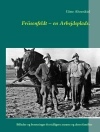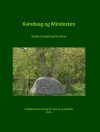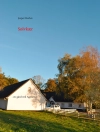This book challenges current views that public life is in decline and that contemporary urban design trends reliant on privatisation, control, events, and thematic designs are to be blamed. Drawing on detailed and extensive analysis of a case study that illustrates well such urban design trends, it shows that informal social life and interaction occur more than its necessary in new master planned environments and new designed public settings, whether public or private owned and/or managed. Furthermore, it reveals the existence of a new category of informal public social settings which it calls fourth places because of their close relationship to Oldenburg’s third places in terms of social and behavioural characteristics – radical departure from the routines of home and work, inclusivity and social comfort – but distinct in terms of activities, locations and spatial conditions – being characterised by spatial, temporal and managerial in-betweenness, i.e. indeterminacy in form, function and times, and a great sense of publicness.
The acceptance of these findings problematises well-established urban design theories about master planning, expands existing social theories about the optimal conditions for public social life by empirically and spatially elaborating on them and redefines several spatial concepts for designing public space in relation to the specific dynamics of informal social interaction. More importantly, it brings optimism to urban design practice, offering new insights into designing more lively and inclusive public spaces.
Table des matières
Introduction: Is public social life in decline and are contemporary masterplanning And public space design practices to be blamed?- Theorisation of informal public social life and interaction in urban public space.- The sociality and spatiality of social encounters among strangers.- Observations on the theorized conditions that support informal social interactions in new designed public spaces.- Observations on the under-theorized conditions that support informal social.- Interactions in new designed public spaces.- ‘Fourth-places’: The contemporary public settings for informal social life and Interaction.
A propos de l’auteur
Patricia Aelbrecht is a Lecturer in Urban Design and Co-Founding Director of the Public Space Observatory Research Centre at Cardiff University. Her research sits at the intersection of urban design, environmental-behavioural studies, and human geography. She has published widely on the design and sociology of the public realm with a particular focus on informal social practices in public space and the role of public space design and management in promoting social cohesion and intercultural dialogue.












